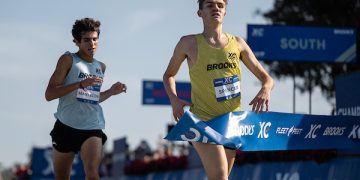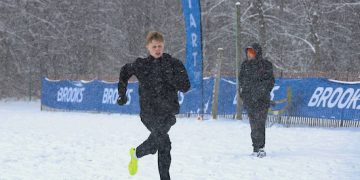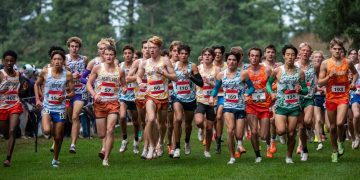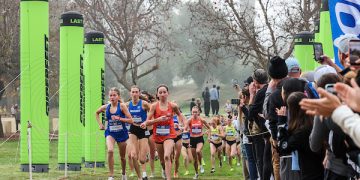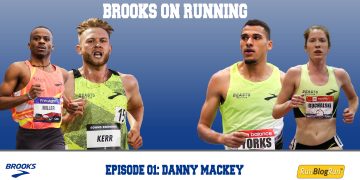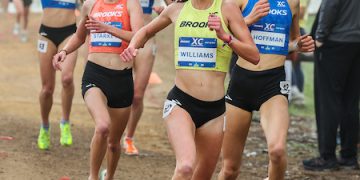 Jo Coates, photo by British Athletics
Jo Coates, photo by British Athletics
This is the second part of the 4 part interview of Jo Coates, the new CEO of UK Athletics. Stuart Weir did this piece in May 2020. Jo Coates gave him the time to discuss a myriad of topics, with ethusiasm and interest. We thank Jo Coates for her time.
Jo Coates, CEO of UK Athletics – Part 2
Jo Coates was appointed CEO of UK Athletics earlier this year. In an exclusive interview with Stuart Weir in May 2020, she shared her vision for the future
What attracted you to the job as CEO of UKA?
I had been at Netball for 10 years and I was made an offer to go to the London Legacy Development Corporation but I stepped out of the true running of sport, I suppose. I missed it terribly. I missed the chaos of running a national governing body – the stress and the pressure, getting calls in the middle of the night “there’s a hole in the netball court” and things like that. I just missed it.
I was approached for the UKA role – I think head-hunters approached a few people – and when they did, I thought: “yes, that would just be a dream”. I had worked in football, in truly commercial sport but never in an Olympic sport. I had worked for Netball which is grassroots through to the elite and Commonwealth. But for a sports administrator, this is the dream job.
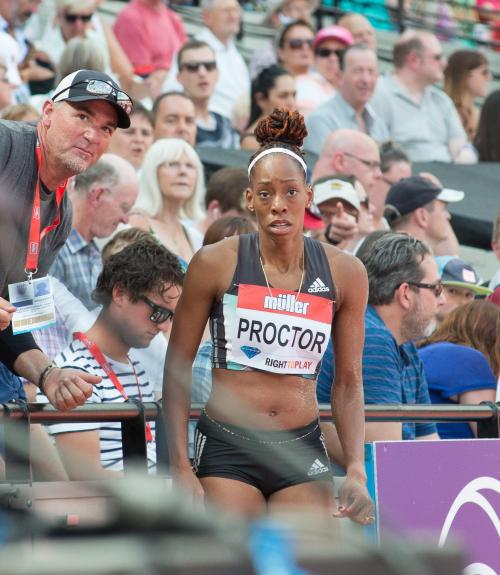 Coach Rana Reider and Shara Proctor, photo by Martin Bateman
Coach Rana Reider and Shara Proctor, photo by Martin Bateman
What is the role of the CEO in relation to the chairman and the board as it works at UKA?
I think a board is there to help set strategy, with the executive, and then to guide the organization through that strategic direction, to assist and bring the skill set to the organization. People sometimes use words like “check and challenge” which is what the board should do.
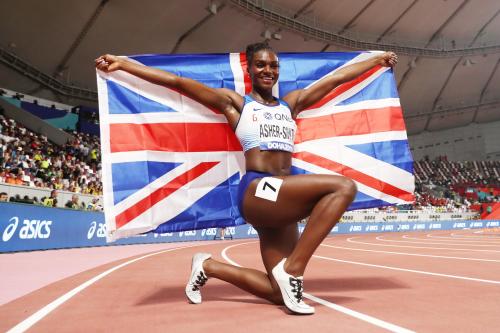 Dina Asher Smith, photo by Getty for IAAF
Dina Asher Smith, photo by Getty for IAAF
I am a trustee of the Youth Sports Trust and I would like to think that is what I bring to the executive there. I don’t think that the board should be seen as stopping the executive doing things. The board should be there to help the executive to make the right decisions.
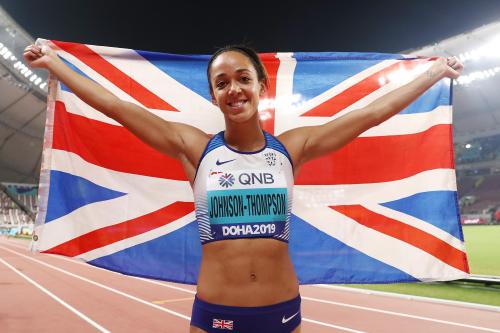 Katerina Johnson-Thompson, photo by Getty for IAAF
Katerina Johnson-Thompson, photo by Getty for IAAF
The CEO is the leader of the ship. We are the people who operationally deliver what was needed and ultimately, I am the accountable officer, a role which I take very seriously.
The chairman is my boss and I am accountable to the chairman. The chairman’s role is to chair the board, not to get involved in executive decisions. At this moment in time we have a phenomenal chairman who understands his chair responsibilities. He is there to chair the board and support the CEO – to be a good support and sounding board to the CEO.
 Fans at Birmingham DL, photo by Getty Images / British Athletics
Fans at Birmingham DL, photo by Getty Images / British Athletics
That’s where I see the difference between operationally delivering and strategically guiding.
You’re not an athletics person: is that a weakness or a strength?
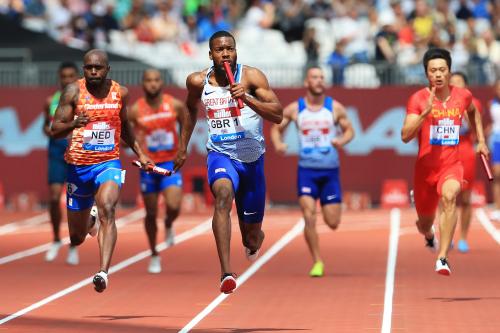 GBR 4 x 100m, London 2017, photo by Getty for IAAF
GBR 4 x 100m, London 2017, photo by Getty for IAAF
I think it’s a huge strength. I had never played netball and they never got me on a netball court! And I still don’t play netball. But I was able to go in there with a fresh pair of eyes, make quite tough decisions. Because you don’t have the emotional connection, you can look at it more as a business and ask: “where do I need to make change?” And I don’t think I did a bad job there. I want to take all the learnings that I’ve had from sport over the years and apply it to athletics. I think you can look at it with a really fair pair of eyes. Because you don’t have the emotion, you can be very critical of things. But don’t get me wrong because you do then fall in love with it! I still follow everything that netball does; I follow them on twitter, I still watch it and I absolutely adore the sport.
But I do think it’s a massive advantage [not having an athletics background]. Of course, you need people around you who have the knowledge of the sport – that’s the key thing. Surround yourself with great people who understand the sport. Learn from them and consult them. But I think that coming in fresh is a good thing.
How does a governing body balance winning Olympic gold medals with the needs of the Park runner?
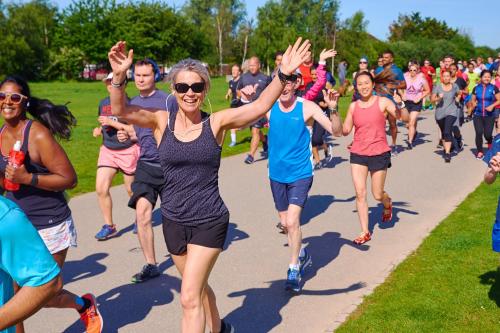 A look at Parkruns, photo by parkrun
A look at Parkruns, photo by parkrun
That’s an interesting one for me because of netball, where we were the governing body for the whole system from the seven-year-old starting to play to the elite level. We called it “cradle to grave” because some of our older ladies might actually have disappeared from this earth on a netball court!
But it’s different at UKA because we have a different part of the pathway from the home countries and you also have external providers, like parkruns, who don’t have a huge connection to you.
I think you do it by involving all the stakeholders – at every single level. That is really important and you build a plan for the whole sport – a plan that is athletics in the UK and you understand where you can influence an elite athlete, a club runner or a basic jogger, like me. You have to understand, as the governing body, how you can influence them but you might not be the direct deliverer. And I think that is what UKA’s responsibility is.
You can influence them by having the right coaching structure, the right competition structures and safeguarding. With all those things you have a touch point with people whether affiliated to you, a home country or they’re just a recreational athlete whose association is with a park run.
Author
-

Since 2015, Stuart Weir has written for RunBlogRun. He attends about 20 events a year including all most global championships and Diamond Leagues. He enjoys finding the quirky and obscure story.
View all posts


